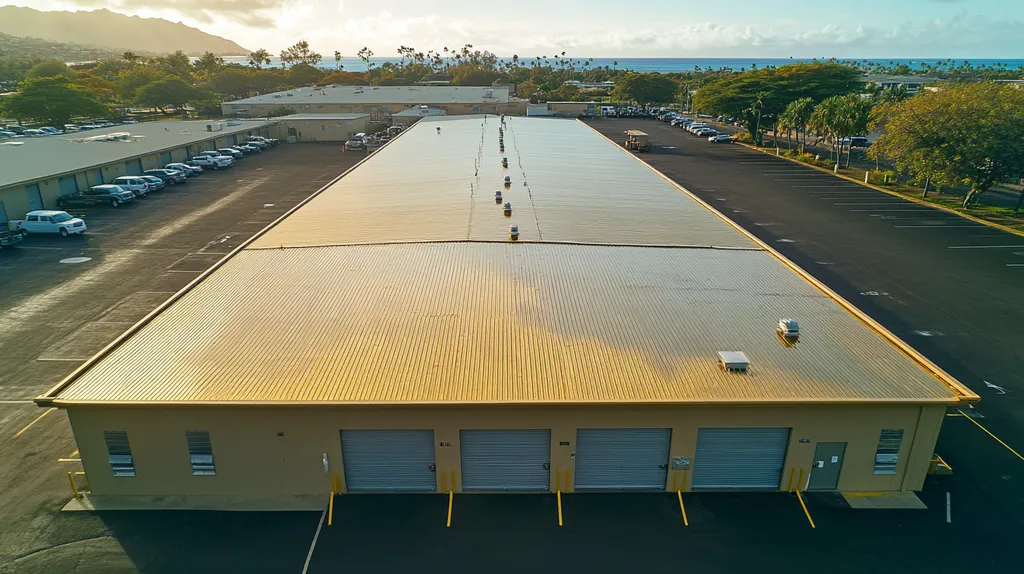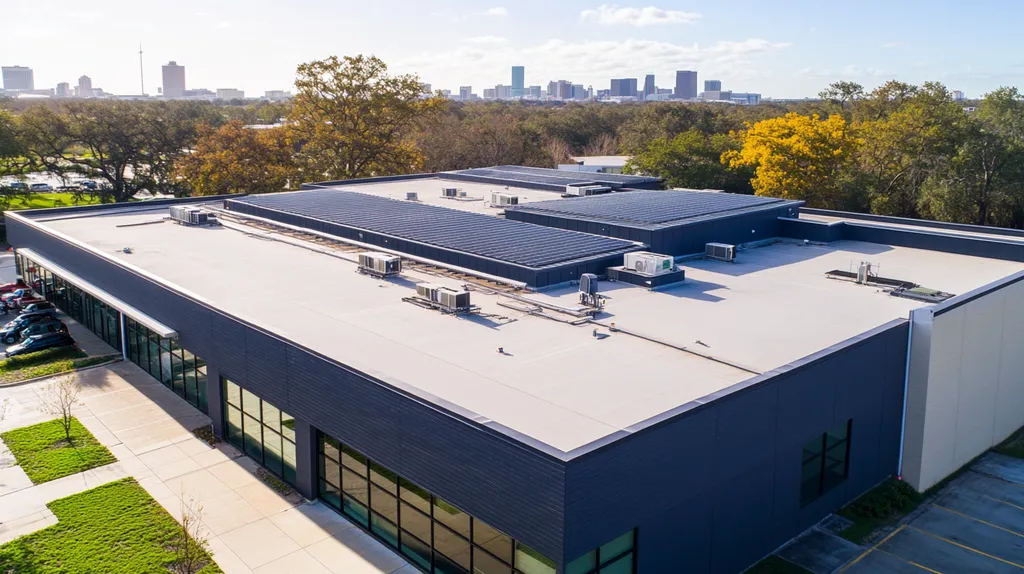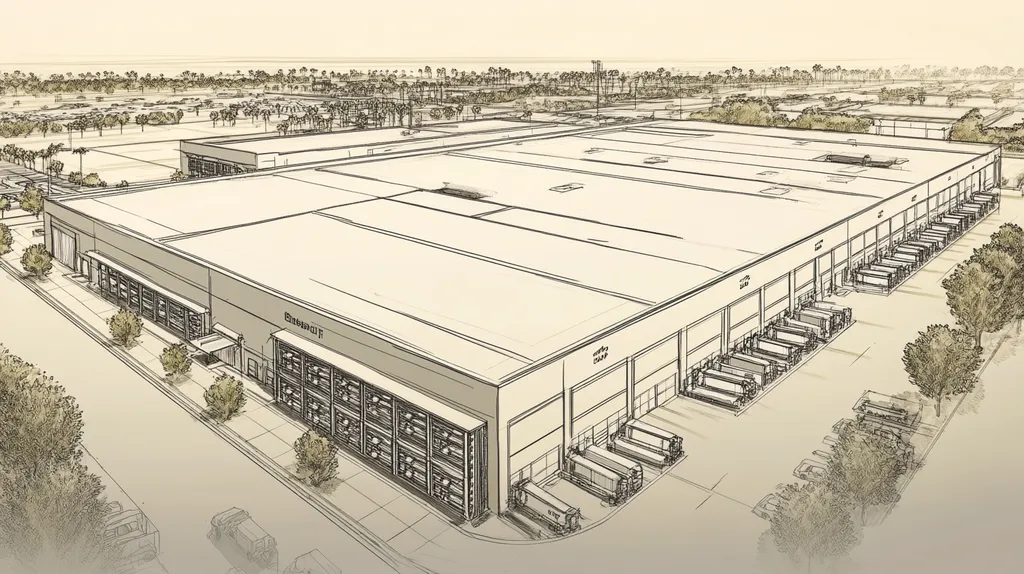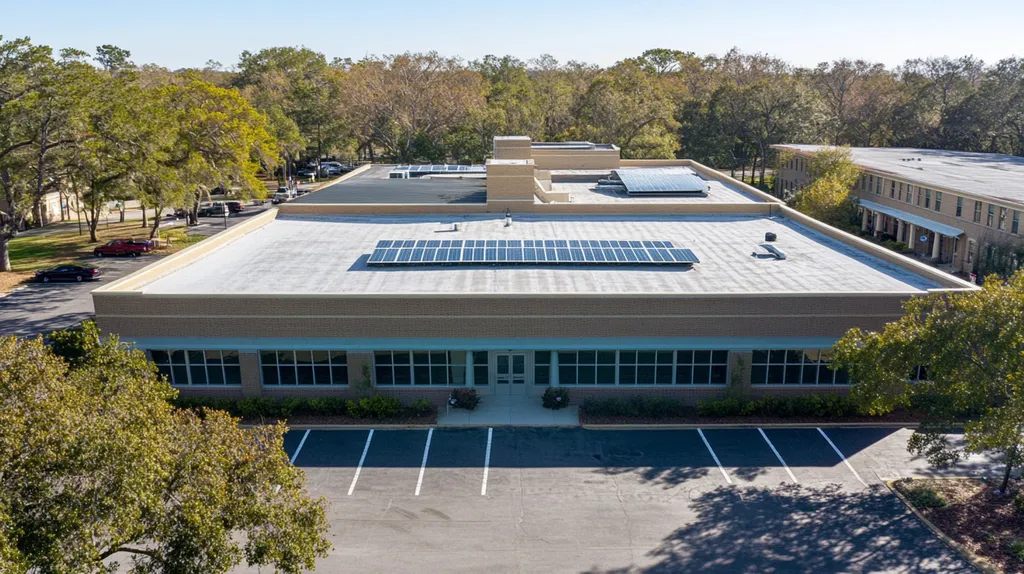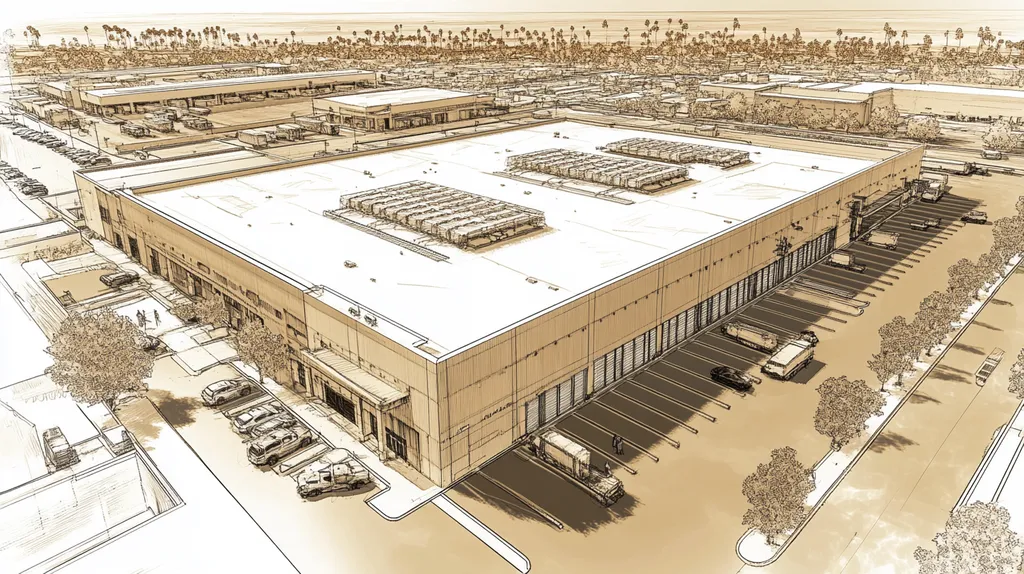Every year, commercial property owners lose millions due to preventable roof failures, with 80% of these incidents traced back to inadequate inspection practices.
Understanding the right frequency for roof membrane inspections isn’t just about maintenance – it’s about protecting valuable assets and avoiding costly emergency repairs.
From weather-driven deterioration to structural stress, commercial roofs face numerous threats that regular inspections can identify and address before they become critical issues.
This comprehensive guide examines essential inspection frequencies, key warning signs, and proven strategies for maintaining commercial roof membranes throughout their lifecycle.
SECTION 1: FUNDAMENTAL CONCEPTS
Regular inspections of commercial roof membranes are not just a good idea; they are vital for ensuring the safety and efficiency of a facility. Shockingly, 30% of roof failures arise from minor issues that go unnoticed during routine checks. By keeping a close eye on roof conditions, property managers can extend the roof’s lifespan and avoid the burden of costly repairs. This section will delve into why inspections are important, examine common roofing materials and their lifespans, and provide insights on how to detect potential problems before they escalate.
Importance of Regular Inspections
Regular inspections of commercial roofs are essential for maintaining their strength and functionality.
Every year, property owners grapple with unplanned downtime and unexpected repair costs due to unseen problems.
Think of inspections as an early warning system that allows for prompt action when issues arise.
Studies show that routine inspections can add an impressive 15-20% to the lifespan of a roof.
They also help ensure compliance with warranty terms, protecting the financial investment in the roofing system.
Ultimately, proactive monitoring equips property managers with the information needed to make sound maintenance and repair decisions.
Common Roofing Materials and Lifespans
Commercial roofs are typically made from a diverse range of materials, each with unique performance characteristics and expected lifespans.
Popular materials include TPO, EPDM, PVC, and built-up roofing, with lifespans varying from 15 to 30 years, influenced by environmental factors and maintenance practices.
Understanding these materials is crucial for deciding how often to inspect; certain materials may need more frequent checks due to specific vulnerabilities.
For example, single-ply membranes like TPO and EPDM are prone to punctures and tears, while built-up roofs might develop blisters or seam failures.
Familiarity with each material’s strengths and weaknesses helps in scheduling inspections and anticipating maintenance needs.
This knowledge empowers facility managers to respond swiftly, ensuring the roof performs optimally.
Identifying Potential Roofing Issues
Detecting problems early is key to averting extensive damage and high repair costs.
Facility managers should look out for signs of wear, such as ponding water, which can be especially problematic for flat roofing systems.
Cracks or blisters in the membrane surface, as well as separated seams, can signal deeper vulnerabilities that need immediate attention.
Moreover, inspections should routinely check flashings, drains, and exhaust systems to ensure they are working properly.
Falling debris, weather-related damages, and growth like mold or moss can also jeopardize the roof’s integrity.
By embracing a proactive approach to identifying issues, facility managers can significantly cut down on maintenance costs and safeguard their valuable assets.
SECTION 2: SYSTEM COMPONENTS
Grasping the components of a commercial roofing system is vital for preserving its strength and longevity. Neglecting any key elements can lead to serious water damage, expensive repairs, and even safety risks. From the roofing membrane to the drainage systems, each component plays a crucial role in ensuring that the roof functions effectively throughout its lifespan.
Roofing Membrane and Coatings
The roofing membrane acts as the primary shield against various weather conditions. Made from materials like PVC, TPO, or EPDM, these membranes are prone to deterioration from UV rays and thermal fluctuations over time. Regular inspections help to spot cracks or punctures early, preventing significant water intrusion that could compromise the building’s interior.
In addition to membranes, protective coatings can further extend their life. These coatings help minimize thermal expansion and contraction while enhancing energy efficiency, making the roof more resilient. Evaluating the condition of these coatings during inspections ensures they remain functional, ultimately saving on energy costs and extending the lifespan of the roof.
By regularly monitoring both the membrane and its coatings, property owners can be proactive in preventing extensive damage. It’s not simply about weatherproofing; it’s an investment in the structural integrity and overall value of the building.
Flashing and Sealing Systems
Flashing and sealing systems are key to protecting the roof’s joints, transitions, and penetrations. If these elements are improperly installed or have degraded over time, they can lead to significant leaks and costly water damage. Identifying and resolving these issues during inspections can save property owners from much larger headaches later on.
For example, flashings around chimneys, vents, and walls must be regularly checked for signs of wear. The most effective strategy is to ensure that all sealants are intact, as even the smallest gaps can undermine the entire system. Proactive maintenance is essential in reducing the risk of moisture penetration.
Facility managers should emphasize the inspection of flashing materials, especially in areas prone to severe weather. A robust flashing system can effectively divert water away from critical areas, preserving the overall integrity of the roofing structure.
In summary, regular inspection of flashing and sealing systems is crucial. It helps property owners spot vulnerabilities and take corrective actions before they escalate into severe damage.
Gutters and Drainage Mechanisms
Gutters and drainage systems are indispensable in directing water away from the roof and the building’s foundation. When gutters become clogged or damaged, standing water can accumulate, increasing the risk of roof leaks or even catastrophic collapse. Thus, ensuring these systems remain functional through regular inspections is vital.
Effective drainage not only enhances the roof’s lifespan but also guards against moisture-related issues. Property owners should routinely clear debris from gutters and downspouts to promote optimal water flow. Inspections should also assess the slope and design of the drainage systems to ensure they operate as intended.
In colder climates, inadequate drainage can lead to ice dam formation, which poses further risks of structural damage. Regular checks during seasonal changes can prepare drainage systems for varying weather conditions.
To conclude, maintaining gutters and drainage mechanisms is essential. Frequent inspections play a key role in optimizing roof performance and are critical to the overall health of the building.
SECTION 3: IMPLEMENTATION METHODS
Timely inspections of commercial roof membranes are not just necessary; they are crucial for maintaining the structural integrity of buildings and avoiding expensive repairs. When roofing systems are neglected, it can lead to leaks, structural damage, and lowered property values. In fact, a staggering 50% of roof failures can be traced back to inadequate maintenance. By scheduling regular inspections, property owners can significantly reduce risks, safeguard their investments, and ensure their roofs perform well over time. This section will cover practical strategies for creating a robust inspection program, including adapting to seasonal weather patterns, following up after severe weather events, and implementing thorough inspection checklists.
Scheduling Inspections Around Weather Seasons
Scheduling roof inspections to align with seasonal weather changes is essential for effective maintenance. In regions prone to heavy rain or snow, it’s wise to conduct inspections before and after these seasonal shifts. For instance, scheduling inspections before winter can help identify vulnerabilities that could worsen under the weight of snow.
During spring, property owners should assess any winter damage, such as granule loss or punctures in the membrane. Tackling these issues proactively can prevent them from escalating. Moreover, facilities located in hurricane-prone areas should conduct inspections ahead of the storm season to ensure all roof components are secured properly.
Creating a routine inspection schedule based on typical weather patterns not only keeps roofs in good health but also helps facility managers budget for necessary maintenance and emergency repairs.
Finally, maintaining records of seasonal inspections establishes a historical reference that informs future maintenance strategies and vendor evaluations. This practice emphasizes the need for flexibility in inspection schedules to account for changing weather conditions.
Post-Weather Event Inspection Protocols
Inspections following extreme weather events, like storms or hail, are vital for identifying immediate or concealed damage to roof membranes. Prompt action can significantly reduce long-term issues and costs.
After severe weather, roofing professionals should look for visible damages such as broken flashings, loose seams, or membrane punctures. For example, if pooling water is observed, it may indicate drainage issues that require urgent attention.
Property owners should develop a clear protocol for inspection timelines after inclement weather, ensuring a swift response to potential damages. Implementing an immediate post-storm inspection service helps catch problems early, before they worsen.
Additionally, considering the condition of nearby buildings can provide insights into potential damage, reinforcing the necessity for thorough inspections. This proactive approach fosters a culture of vigilance and responsibility.
Inspection Checklists and Procedures
Using inspection checklists standardizes the evaluation process and ensures no critical areas are overlooked. These checklists should cover essential components like membrane integrity, flashing condition, and drainage systems. This structured approach allows property owners to make informed decisions based on comprehensive assessments.
Each inspection should begin with a review of prior reports to identify any recurring issues, providing context for the current evaluation and helping prioritize necessary repairs.
Taking photographs during inspections adds another layer of accountability and gives a visual history of the roof’s condition. These records can be invaluable for planning maintenance and negotiating with service providers.
Training maintenance staff or partnering with experienced roofing professionals for inspections guarantees that checklist procedures are applied consistently. This collaborative approach encourages shared responsibility for roof maintenance, ultimately enhancing asset longevity.
SECTION 4: MAINTENANCE REQUIREMENTS
Regular maintenance is absolutely critical for maximizing the lifespan of commercial roof membranes. When maintenance is neglected, it can not only compromise a property’s structural integrity but also lead to substantial repair costs that could have been avoided. In fact, roofs that receive consistent inspections can last up to 25% longer than those that are overlooked. This section examines essential preventative maintenance strategies, the urgency of addressing minor issues promptly, and effective budgeting for ongoing roof upkeep.
Preventative Maintenance Strategies
Effective preventative maintenance strategies are key to preserving roof integrity and performance. Property managers should aim to schedule inspections at least twice a year—ideally in spring and fall. This proactive approach allows for the early detection of issues like ponding water or cracked seams before they can cause significant damage.
Keeping the roof clear of debris is also crucial, as accumulation of leaves and dirt can trap moisture, leading to mold growth. Establishing a routine cleaning schedule helps mitigate these risks and ensures the roof remains capable of withstanding various weather conditions.
A comprehensive maintenance checklist can further streamline inspections. This checklist should cover critical areas including seams, flashings, and drainage systems, allowing for timely action when minor problems are identified.
Engaging a qualified roofing contractor for periodic evaluations can enhance the effectiveness of these strategies. Their expertise can provide customized preventive measures tailored to the specific type of roofing material and the local climate conditions.
Addressing Minor Issues Before Major Repairs
Addressing minor roofing issues promptly is vital, as even small leaks can escalate into extensive water damage and mold growth if left unattended. Facility managers should prioritize the quick identification and resolution of these issues as part of their overall maintenance strategy.
By conducting regular inspections, property owners can catch wear and tear before it requires large-scale repairs. This proactive strategy not only saves money but also minimizes disruptions to business operations, ensuring a safe and efficient work environment.
Documenting all maintenance activities and repairs is essential. This record provides a valuable historical reference for assessing the roof’s condition over time and can support future maintenance decisions. Furthermore, maintaining documentation may assist in warranty claims if significant problems arise.
A commitment to ongoing maintenance fosters a culture of proactive care, which greatly reduces the risk of emergency repairs that can disrupt regular business activities. By staying ahead of potential issues, managers can create a safe environment for both tenants and employees.
Budgeting for Roof Maintenance
Smart budgeting for roof maintenance is crucial for managing overall facility costs effectively. Property owners are advised to set aside a percentage of the building’s value annually for roof maintenance and repairs. This forward-thinking strategy can alleviate financial stress when unexpected expenses arise while supporting regular upkeep.
Additionally, creating a long-term financial plan for future roof replacements or major repairs can soften the blow of these costs when they do surface. This planning should take into account the roof membrane’s expected lifespan and any advancements in roofing technology that could influence future investments.
Leveraging the overall maintenance budget to cover roof inspections and minor repairs can yield significant returns. Proper funding promotes fewer major renovations, preserving the integrity of the asset while enhancing property value.
Collaborating with roofing specialists can provide essential cost estimates for both ongoing maintenance and necessary upgrades. This insight is invaluable for informed decision-making, enabling property managers to allocate financial resources effectively and strategically.
SECTION 5: PERFORMANCE METRICS
Regular inspections of commercial roof membranes are essential not only for safety but also for economic efficiency. A revealing 2022 study showed that when roof systems are neglected, energy costs can soar by 30% due to inefficiencies. By closely monitoring key performance metrics, property owners can make proactive decisions that prolong the life of their roofs, ensure compliance with regulations, and preserve the integrity of their buildings.
Evaluating Roof Condition and Integrity
Assessing the condition of a commercial roof requires a thorough and methodical approach. Regular inspections should spot visible damage, such as cracks, blisters, or punctures, which can undermine the roof’s integrity. For example, consistent water pooling can signify drainage issues, hastening deterioration.
Employing tools like infrared thermography can reveal hidden problems, such as moisture trapped within insulation layers that aren’t visible to the naked eye. Additionally, looking at historical data on roof membrane performance helps inform decision-making. Scheduling assessments pre-winter and post-storms can further improve detection capabilities.
Moreover, maintaining a detailed log of inspections and findings enables trend analysis over time. This proactive method allows facility managers to catch potential issues before they evolve into major repairs. Ultimately, establishing a robust evaluation system is key to ensuring the roof remains functional and extends its overall lifespan.
Monitoring Energy Consumption and Insulation
The energy efficiency of a commercial roofing system is directly linked to its condition. Regularly tracking energy consumption can highlight the impact of roof performance on heating and cooling costs. For instance, a sudden spike in energy bills may indicate insulation issues arising from a compromised roof membrane.
Proper insulation is crucial for maintaining consistent indoor temperatures, thus reducing energy expenses. Facility managers should assess insulation effectiveness during routine roof inspections. This dual approach offers a complete understanding of energy loss factors.
Conducting energy audits can also be beneficial. These audits can determine if investments in green technologies, like reflective roofing materials, are justified. By evaluating energy performance before and after roof upgrades, property owners can quantify their return on investment and align with sustainability goals.
Assessing Safety and Compliance Standards
Ensuring safety and compliance is critical in commercial roofing. Regular inspections help identify structural issues while ensuring adherence to local building codes and safety regulations. Non-compliance can lead to heavy fines or legal challenges, making ongoing evaluations vital for risk management.
Facility managers must uphold safety protocols during inspections and promptly address any identified hazards. For instance, loose safety anchors can pose serious risks during maintenance. Identifying these vulnerabilities through routine assessments is essential for protecting both personnel and property.
Documenting safety measures and compliance checks contributes to a comprehensive safety protocol. This documentation is invaluable during audits or inspections by regulatory bodies, showcasing a commitment to high standards. By prioritizing safety and compliance, property owners not only protect their investments but also help ensure a secure environment for all occupants.
SECTION 5: PERFORMANCE METRICS
Regular inspections of commercial roof membranes are essential for maintaining safety and ensuring economic efficiency. Research from 2022 indicates that ignoring roof systems can cause energy costs to jump by 30% due to inefficiencies. By keeping an eye on key performance metrics, property owners can make informed choices that not only extend the life of their roofs but also maintain compliance and stability for their buildings.
Evaluating Roof Condition and Integrity
Assessing the condition of a commercial roof demands a detailed and systematic approach. Regular inspections should prioritize spotting visible damage like cracks, blisters, or punctures, all of which can jeopardize the roof’s integrity. For instance, ongoing water pooling may signal drainage problems, leading to accelerated deterioration.
Utilizing advanced tools like infrared thermography can detect hidden issues, such as moisture trapped within insulation that’s not obvious at first glance. By also reviewing historical data on roof membrane performance, facility managers can make better decisions. Timing these evaluations, particularly before winter and after severe storms, can significantly enhance detection capabilities.
Furthermore, keeping a meticulous log of inspections and findings enables facility managers to analyze trends over time. This proactive strategy helps catch potential problems before they escalate into costly repairs. Ultimately, establishing a robust evaluation system is vital for ensuring that the roof remains functional and extending its lifespan.
Monitoring Energy Consumption and Insulation
The energy efficiency of commercial roofing systems is closely linked to their overall condition. Regularly tracking energy use can highlight how roof performance affects heating and cooling costs. For example, an unexpected spike in utility bills may suggest that insulation is deteriorating due to a compromised roof membrane.
Maintaining proper insulation is crucial for achieving stable indoor temperatures, thus reducing energy bills. Facility managers should evaluate insulation effectiveness during routine roof inspections. This dual approach results in a comprehensive understanding of potential energy loss factors.
Additionally, conducting energy audits can prove beneficial, indicating whether investments in sustainable technologies, such as reflective roofing materials, are worthwhile. By assessing energy performance before and after roof upgrades, property owners can clearly quantify their return on investment and align with sustainability goals.
Assessing Safety and Compliance Standards
Safety and compliance should be top priorities in commercial roofing. Regular inspections help identify structural issues while ensuring adherence to local building codes and safety regulations. Non-compliance can lead to hefty fines or legal issues, underscoring the importance of consistent evaluations for effective risk management.
Facility managers must rigorously follow safety protocols during inspections and address any identified hazards swiftly. For example, loose safety anchors can pose significant risks during maintenance activities, making it critical to identify such vulnerabilities through routine assessments.
Documenting safety measures and compliance checks contributes to a comprehensive safety protocol. This documentation can be invaluable during audits or inspections by regulatory bodies, showcasing a commitment to high standards. By prioritizing safety and compliance, property owners protect their investments while fostering a secure environment for all occupants.
The Bottom Line
With up to 80% of commercial roof failures traceable to inadequate inspection practices, the importance of regular membrane evaluations cannot be overstated.
Professional inspections can extend a roof’s lifespan by 15-20% while preventing catastrophic failures that could cost businesses millions in repairs and lost revenue.
The key is establishing a comprehensive inspection schedule that accounts for seasonal changes, implements thorough checklists, and maintains detailed documentation of all findings.
By prioritizing preventative maintenance through regular inspections, facility managers can protect their investments, ensure regulatory compliance, and maintain optimal building performance for years to come.
Remember: when it comes to commercial roof membranes, prevention through inspection is always more cost-effective than emergency repairs.
FREQUENTLY ASKED QUESTIONS
Q. Why is inspection frequency important for a commercial roof?
A. Regular inspections are essential to detect minor issues before they escalate. This proactive approach can extend the lifespan of your roof significantly and help you avoid costly repairs. Think of it as routine health check-ups for your building – a little attention can prevent major problems later.
Q. What components should I inspect on my industrial roof?
A. Key components to inspect include the roofing membrane, flashings, and drainage systems. Each part plays a vital role in preventing leaks and maintaining the overall health of your roof. Regular checks for damage or deterioration can significantly reduce the risk of water intrusion and associated repair costs.
Q. How do I create an inspection schedule for my commercial roof?
A. Start by aligning your inspections with seasonal weather changes. For instance, it’s sensible to inspect both before winter and after heavy storms. Document your inspections to track findings over time and adjust your schedule based on weather patterns and roof performance trends.
Q. What preventative maintenance should I follow for my commercial roof?
A. Key maintenance practices include scheduling inspections at least twice a year, cleaning debris, and addressing minor repairs immediately. Establishing a checklist for inspections ensures no critical areas are missed. With a little regular attention, you can significantly improve the roof’s longevity and performance.
Q. How do I evaluate the energy efficiency of my commercial roof?
A. Monitor your energy consumption regularly to identify any spikes that may indicate insulation issues. Conduct routine inspections to assess your roof’s condition and perform energy audits to determine if upgrades would yield better efficiency. These steps help maintain a comfortable indoor environment while controlling costs.
Q. What safety regulations should I consider during roof inspections?
A. Always ensure your inspections comply with local building codes and safety regulations. Maintain safety protocols to protect personnel during inspections, and document checks to validate your commitment to safety. Adhering to regulations helps avoid legal issues and keeps your environment secure for everyone.
Q. How can I minimize repair costs for my commercial roof?
A. Minimize repair costs by adopting a proactive maintenance approach. Regular inspections catch minor issues before they escalate into major repairs. Implementing preventative measures and maintaining detailed records of previous inspections aids in budgeting effectively, ensuring your roof’s longevity and protecting your investment over time.


